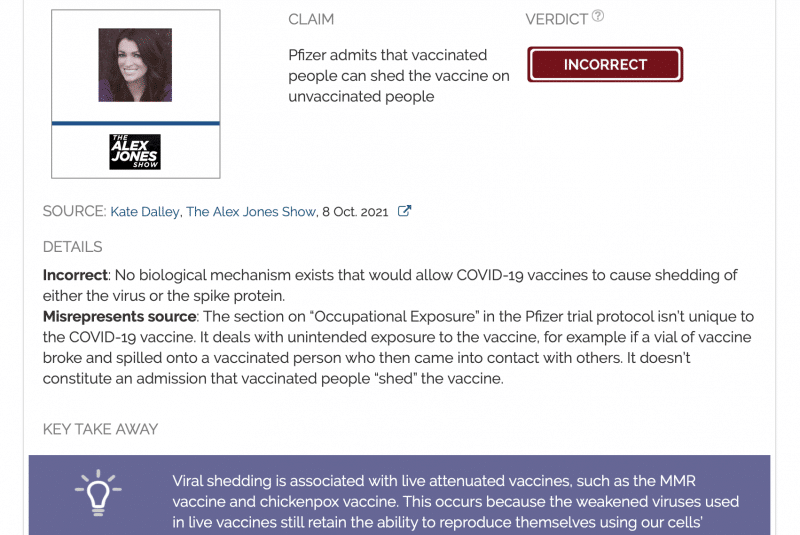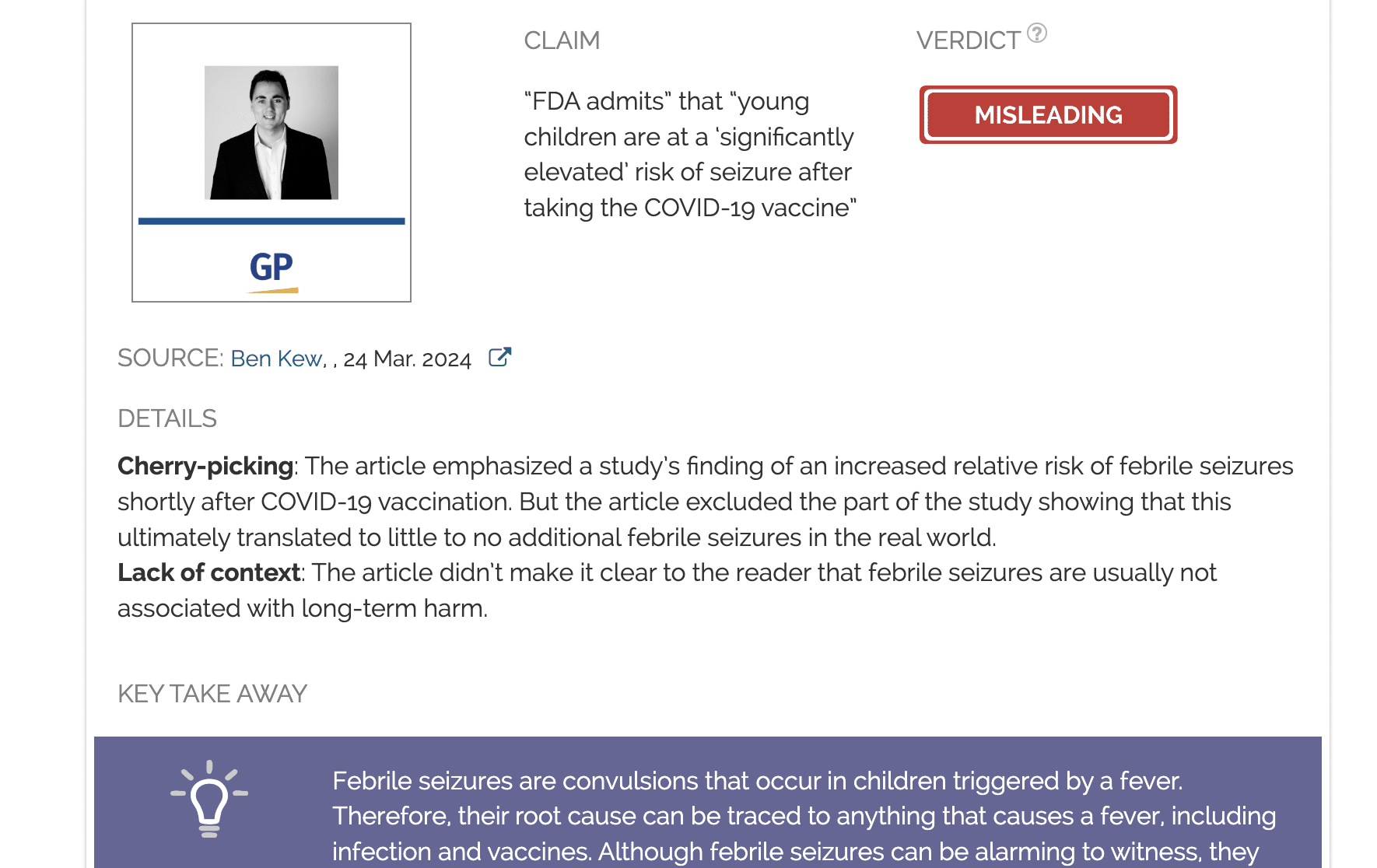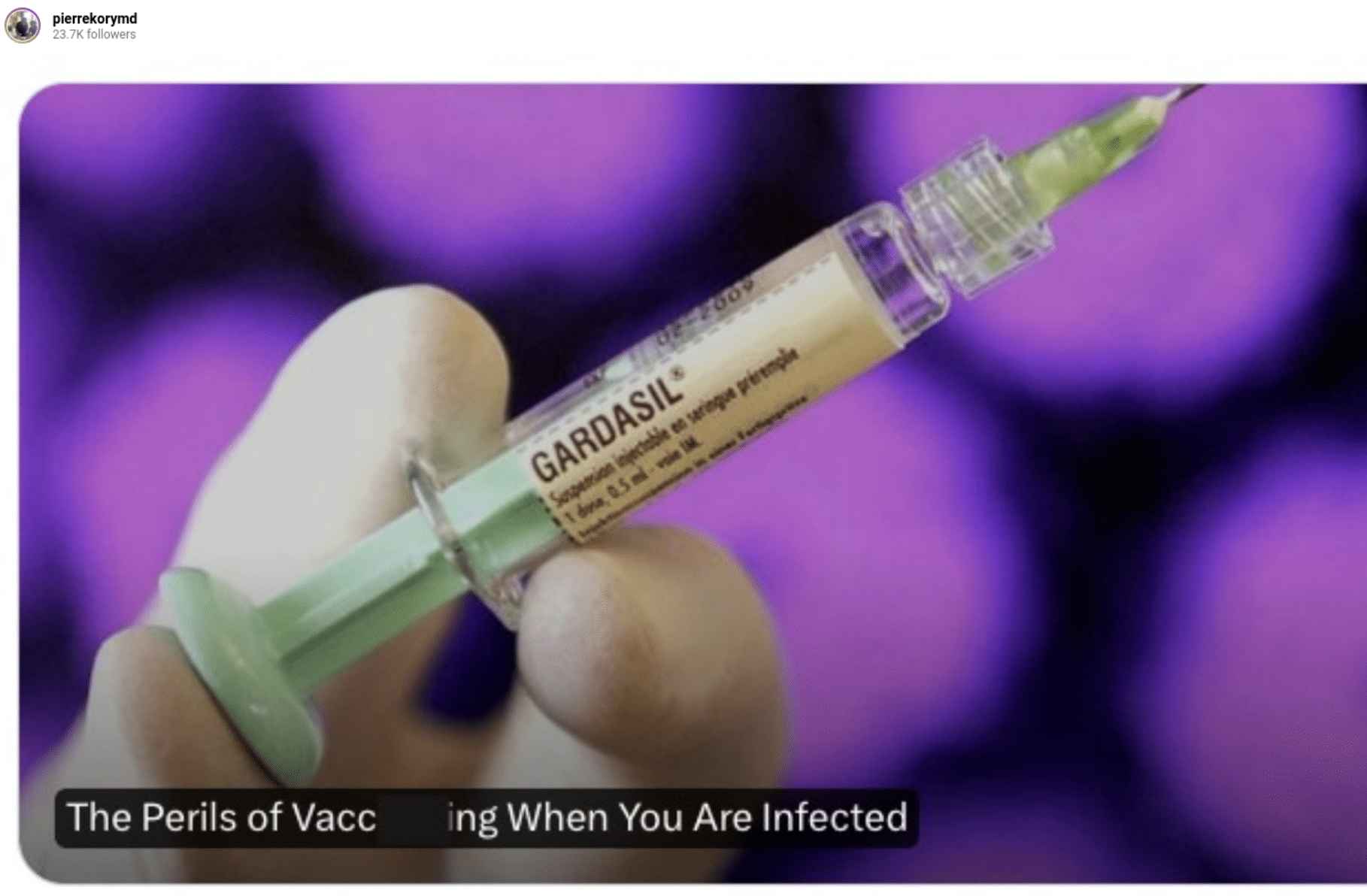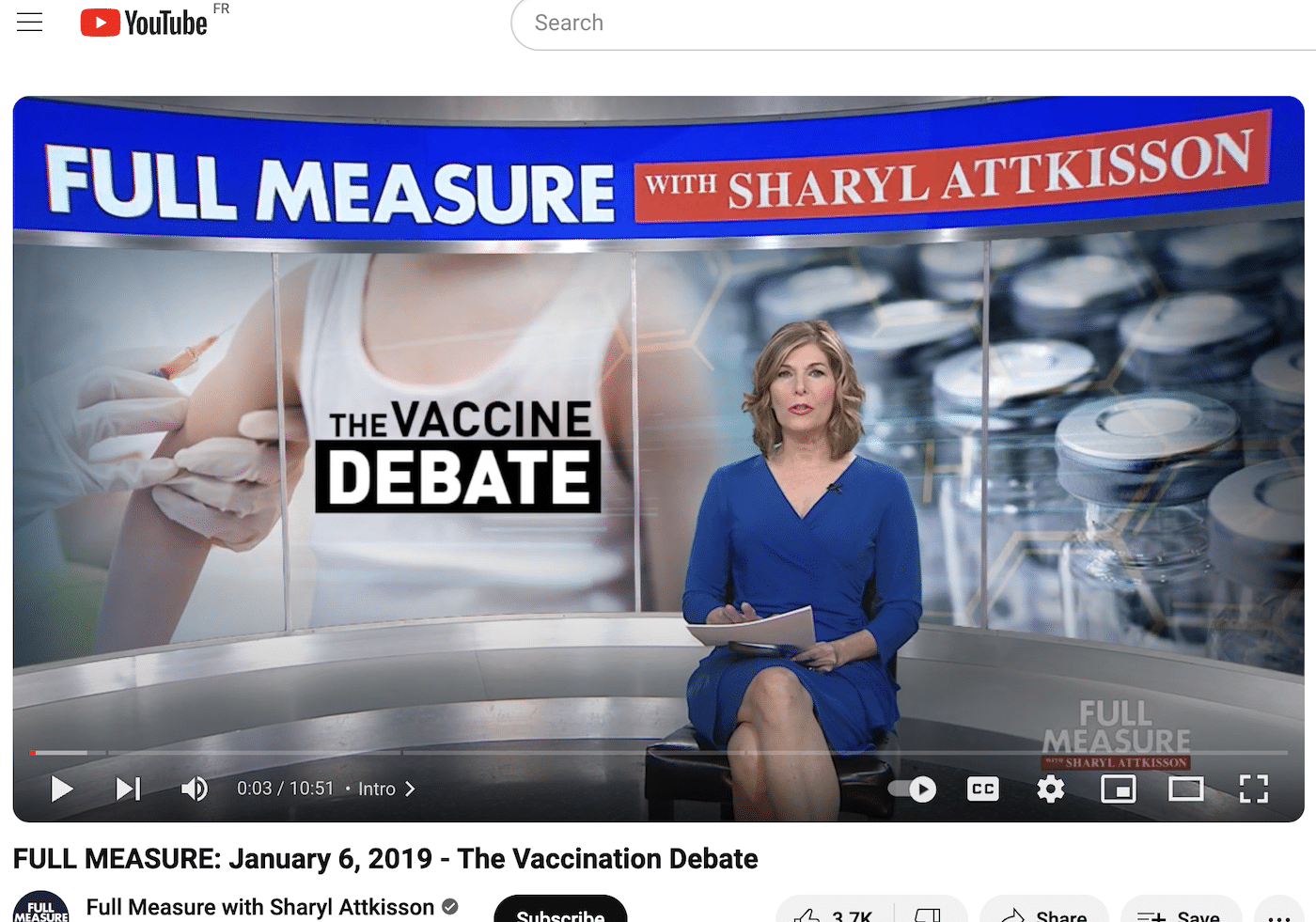- Health
No evidence that the COVID-19 vaccines cause “shedding”; Pfizer trial protocol doesn’t admit that vaccine shedding occurs
Key takeaway
Viral shedding is associated with live attenuated vaccines, such as the MMR vaccine and chickenpox vaccine. This occurs because the weakened viruses used in live vaccines still retain the ability to reproduce themselves using our cells’ protein-making machinery. However, none of the COVID-19 vaccines available to date use live viruses. In addition, COVID-19 mRNA vaccines don’t induce high-enough levels of spike protein production that would lead the protein to be excreted. Scientific studies showed that SARS-CoV-2 infection causes shedding, but not vaccination.
Reviewed content

Verdict:
Claim:
Pfizer admits that vaccinated people can shed the vaccine on unvaccinated people
Verdict detail
Incorrect: No biological mechanism exists that would allow COVID-19 vaccines to cause shedding of either the virus or the spike protein.
Misrepresents source: The section on “Occupational Exposure” in the Pfizer trial protocol isn’t unique to the COVID-19 vaccine. It deals with unintended exposure to the vaccine, for example if a vial of vaccine broke and spilled onto a vaccinated person who then came into contact with others. It doesn’t constitute an admission that vaccinated people “shed” the vaccine.
Full Claim
“Pfizer admitted you can shed the vaccine from one vaccinated to an unvaccinated”
Review
One of the myths about the COVID-19 vaccines is that they cause vaccinated people to shed spike proteins. This claim circulated in the first half of 2021, often combined with the claim that COVID-19 vaccines interfere with the normal menstrual cycle. Both claims were addressed in this previous Health Feedback review.
Another iteration of this claim seized on the clinical protocol for the Pfizer clinical trials to claim that Pfizer admitted that “shedding” from the vaccine occurs, as seen in this video of the Alex Jones Show from 2021 which was later reposted to Facebook in March 2023. The claim was made by podcaster and former Fox News host Kate Dalley.
But this claim misrepresents the protocol, and “shedding” from the vaccine isn’t possible, as we will explain below.
The belief that COVID-19 vaccines cause shedding likely has its origins in viral shedding associated with live attenuated vaccines, such as the MMR vaccine and chickenpox vaccine. This is where the vaccinated person excretes newly-produced, vaccine-originated, viruses through nasal and oral secretions. This occurs because the viruses used in live vaccines still retain the ability to reproduce themselves using our cells’ protein-making machinery, although they are weakened and are unable to cause disease in healthy people.
However, none of the COVID-19 vaccines authorized in the U.S. use live viruses. Furthermore, most of the COVID-19 vaccines authorized for use in the U.S.—except for the Novavax vaccine—use only the spike protein, not the entire virus. And the mRNA vaccines specifically only used the mRNA for the spike protein, which is the blueprint for making the spike protein, not the protein itself.
David Gorski, a professor of surgery at Wayne State University and an editor of Science-Based Medicine who regularly debunks vaccine misinformation, explained that the mRNA degrades over time and vaccinated people don’t produce high-enough levels of spike protein to be excreted.
The video claimed that the Pfizer clinical protocol admitted to “shedding” by citing Section 8.3.5.3. on Occupational Exposure. However, this section doesn’t contain an admission of “shedding” from the vaccine. This section states:
“An occupational exposure occurs when a person receives unplanned direct contact with the study intervention, which may or may not lead to the occurrence of an AE. Such persons may include healthcare providers, family members, and other roles that are involved in the trial participant’s care.”
In a Substack post, obstetrician and gynecologist Jen Gunter clarified that “The study intervention is the vaccine (defined on page 45 of the protocol), not the spike protein or anything else”, and “exposure” refers to exposure to the vaccine in ways other than being vaccinated. This could happen if a vial broke near a vaccinated person and the vaccine got on their skin and the vaccinated person later came into contact with other people. “This DOES NOT mean breathing on someone or acquisition by shedding after vaccination,” she explained.
Gunter also added that this section is part of the boilerplate language for trial protocols for new drugs in general:
“This is the part of the study protocol that details what should happen with accidental exposure during pregnancy, breastfeeding, or exposure at work. All new drugs have sections like this in their protocols, so the existence of this is not clandestine or a sign that people at Pfizer knew something we, the public, did not.”
Shobha Swaminathan, an associate professor of medicine at Rutgers New Jersey Medical School, told AP News that the language in this section was intended for gathering information about any kind of exposure, at a point in time when the risks weren’t well-understood yet—this is in keeping with the goal of a clinical trial. But we now have a better understanding of the COVID-19 vaccines safety thanks to continuing research.
In short, there’s no known biological mechanism for COVID-19 vaccines to cause shedding, and the claim that the Pfizer trial protocol showed otherwise is false and distorts the nature of the information in the protocol. What does cause shedding is SARS-CoV-2 infection[1,2], like other viral respiratory infections[3,4] and which COVID-19 vaccines help to reduce the risk of. Thus COVID-19 vaccination can help address concerns over shedding.
REFERENCES
- 1 – Puhach et al. (2022) SARS-CoV-2 viral load and shedding kinetics. Nature Reviews Microbiology.
- 2 – Boucau et al. (2022) Duration of Shedding of Culturable Virus in SARS-CoV-2 Omicron (BA.1) Infection. New England Journal of Medicine.
- 3 – Otomaru et al. (2021) Risk of Transmission and Viral Shedding From the Time of Infection for Respiratory Syncytial Virus in Households. American Journal of Epidemiology.
- 4 – Leung et al. (2020) Respiratory virus shedding in exhaled breath and efficacy of face masks. Nature Medicine.



